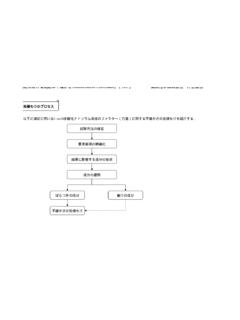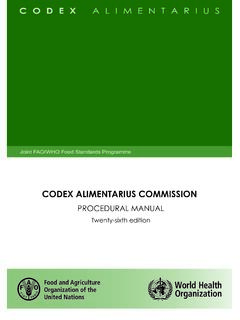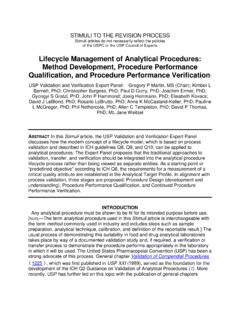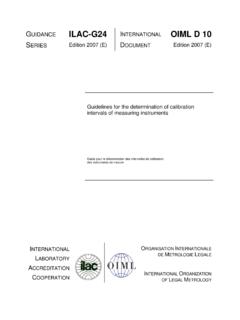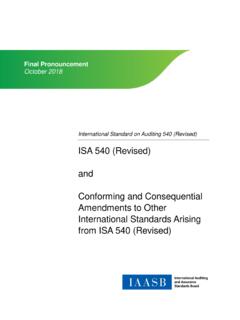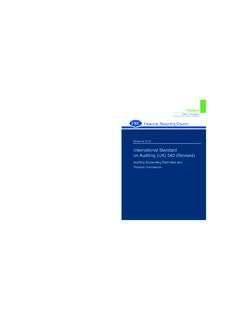Transcription of MODEL CERTIFICATE OF ANALYSIS - World Health …
1 Working document November 2016 Draft document for comment 1 MODEL CERTIFICATE OF ANALYSIS 2 (November 2016) 3 4 DRAFT FOR COMMENT 5 6 World Health Organization 2016 7 All rights reserved. 8 This draft is intended for a restricted audience only, the individuals and organizations having received this draft. The 9 draft may not be reviewed, abstracted, quoted, reproduced, transmitted, distributed, translated or adapted, in part or in whole, 10 in any form or by any means outside these individuals and organizations (including the organizations' concerned staff and 11 member organizations) without the permission of the World Health Organization.
2 The draft should not be displayed on any 12 website. 13 Please send any request for permission to: 14 Dr Sabine Kopp, Group Lead, Medicines Quality Assurance, Technologies Standards and Norms, Department of Essential 15 Medicines and Health Products, World Health Organization, CH-1211 Geneva 27, Switzerland. Fax: (41-22) 791 4730; 16 email: 17 The designations employed and the presentation of the material in this draft do not imply the expression of any opinion 18 whatsoever on the part of the World Health Organization concerning the legal status of any country, territory, city or area or 19 of its authorities, or concerning the delimitation of its frontiers or boundaries.
3 Dotted lines on maps represent approximate 20 border lines for which there may not yet be full agreement. 21 The mention of specific companies or of certain manufacturers products does not imply that they are endorsed or 22 recommended by the World Health Organization in preference to others of a similar nature that are not mentioned. Errors 23 and omissions excepted, the names of proprietary products are distinguished by initial capital letters. 24 All reasonable precautions have been taken by the World Health Organization to verify the information contained in this 25 draft. However, the printed material is being distributed without warranty of any kind, either expressed or implied.
4 The 26 responsibility for the interpretation and use of the material lies with the reader. In no event shall the World Health 27 Organization be liable for damages arising from its use. 28 This draft does not necessarily represent the decisions or the stated policy of the World Health Should you have any comments on the attached text, please send these to: Dr Sabine Kopp, Group Lead, Medicines Quality Assurance, Technologies Standards and Norms, World Health Organization, 1211 Geneva 27, Switzerland; email: fax: (+41 22) 791 4730; and to Mrs Wendy Bonny by 31 January 2017. Working documents are sent out electronically and they will also be placed on the Medicines website for comment.
5 If you do not already receive directly our draft guidelines please let us have your email address (to and we will add it to our electronic mailing list.. Working document page 2 SCHEDULE FOR THE PROPOSED ADOPTION PROCESS OF DOCUMENT 30 : 31 MODEL CERTIFICATE OF ANALYSIS 32 Suggestion to revise the MODEL CERTIFICATE of ANALYSIS (published as Annex 10 in the WHO Technical Report Series, No. 902), 2002 during the Joint meeting on regulatory guidance for multisource products with the medicines quality assurance group and the prequalification of medicines team - assessment group held in Copenhagen, taking care of the new trends and international developments 8 9 July 2016 Drafting of a revised text based on the suggestions made during the above meeting by Dr J.)
6 Sabartova, Czech Republic August September 2016 Presentation to the fifty-first meeting of the WHO Expert Committee for the Specifications of Pharmaceutical Preparations (ECSPP), recommendation to continue revising process 17 21 October 2016 Circulation for comments November 2016 Compilation of comments received February 2017 Discussion of feedback received during an informal consultation Date tbd Circulation for comments June 2017 Compilation of comments received August September 2017 Presentation to fifty-second meeting of the WHO ECSPP October 2017 Any follow-up action, as needed Working document page 3 Contents 33 page 34 MODEL CERTIFICATE of analysis1 35 36 It has been recommended in various fora that WHO should establish a MODEL CERTIFICATE of 37 ANALYSIS (CoA) for use in trade in starting materials and by manufacturers of pharmaceutical 38 substances, excipients and finished pharmaceutical products (FPPs).
7 A MODEL of such a 39 CERTIFICATE is shown in Appendix 1. The items included are based on WHO good practices for 40 pharmaceutical quality control laboratories (1) and WHO good manufacturing practices 41 (GMP) for pharmaceutical products (2). In addition, requirements of the International 42 Standard ISO/IEC 17025:2005 (3) and recommendations of the International Pharmaceutical 43 Excipients Council (4) have been taken into account. If any specific legal requirements exist 44 in the country of issue or importation they should be considered when issuing the CERTIFICATE . 45 The format and organization of the information on the CoA is at the issuing laboratory s 46 discretion.
8 47 48 According to WHO good practices for pharmaceutical quality control laboratories (1) CoA 49 lists test procedures applied to a particular sample with the results obtained and the 50 acceptance criteria applied, and indicates whether or not the sample complies with the 51 specification. A CoA is usually prepared for each batch of a substance or product and should 52 include the following information: 53 the name and address of the laboratory performing the tests; 54 the identification number of the CoA and on each page an identification in order to 55 ensure that the page is recognized as a part of the CERTIFICATE ; 56 the name and address of the originator of the request for ANALYSIS ; 57 the laboratory registration number of the sample; 58 the date on which the sample for which the CERTIFICATE is issued was received.
9 59 the name, description ( active ingredient, dosage form, strength, package size in the 60 case of FPPs; grade in the case of starting materials; quantity received; type and material 61 of containers), batch number (used by the original manufacturer and repacker/trader) of 62 the sample for which the CERTIFICATE is issued, the expiry date (or retest date, where 63 applicable) and date of manufacture (if available); 64 the name and address of the original manufacturer and, if applicable, those of the 65 repacker and/or trader; 66 a reference to the test procedure(s) used, including the acceptance criteria (limits); 67 the results of all tests performed on the sample for which the CERTIFICATE is issued (in 68 numerical form, where applicable) and a comparison with the established acceptance 69 criteria (limits); 70 any additional test results obtained on samples from the batch as part of a periodic 71 statistically based testing programme; 72 any comments, observations, deviations from the test method or information on specific 73 test conditions should be included, where necessary for the interpretation of the results.
10 74 1 This was previously published as Annex 10 in the WHO Technical Report Series, No. 902, 2002. Working document page 4 a conclusion as to whether or not the sample was found to be within the limits of the 75 specification; 76 the date(s) on which the test(s) was (were) completed; 77 the date and signature of the head of the laboratory or other authorized person approving 78 the CERTIFICATE . 79 80 In the case that the sampling plan and procedures used by the laboratory or other bodies are 81 relevant to the validity or interpretation of the results, they should be referenced in the CoA. 82 Where relevant to the validity or application of the results, or if required by a customer, a 83 statement on the estimated uncertainty of measurement should be included.










